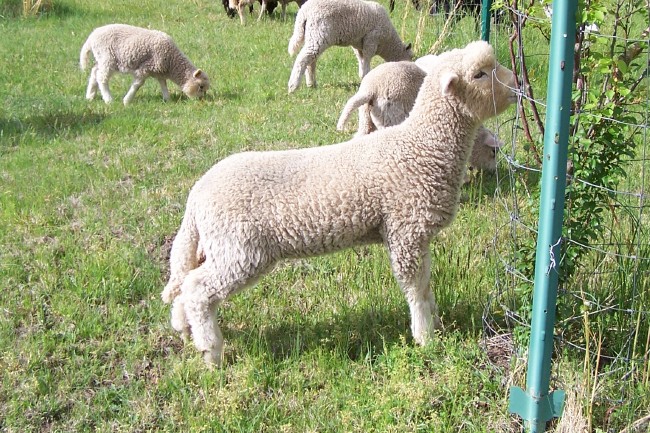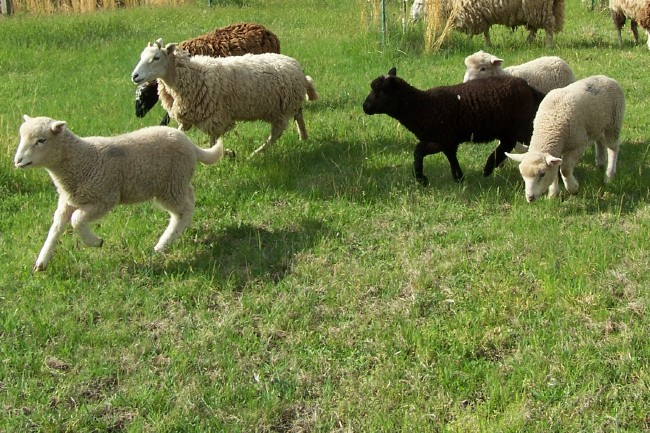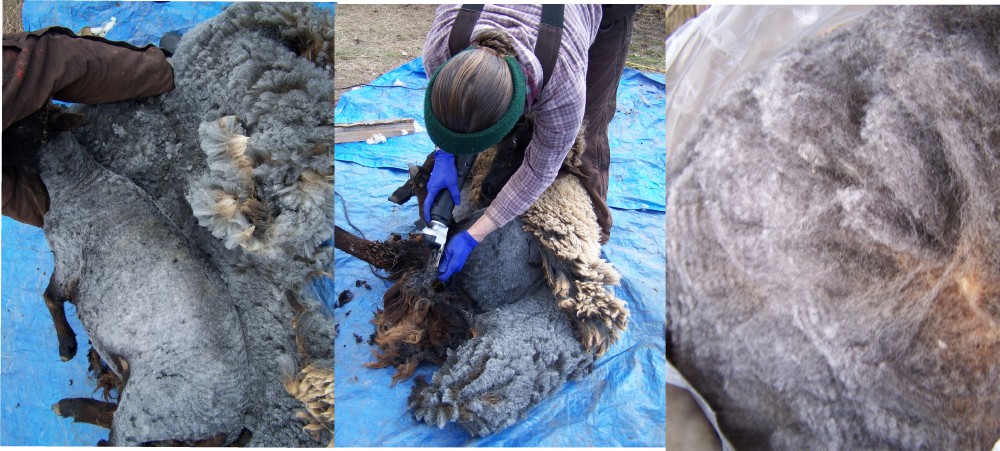Over the next few weeks, we are going to go into more technical detail about specific sheep breeds and the yarns their wool yields.
There are hundreds of breeds of sheep in the world, and through deliberate and sometimes natural breeding, such as on isolated islands in Ireland, they have developed very specific breed traits. These are manifested in their confirmation, the shape of their heads, and their wool. Some sheep have horns and some don’t. They also develop differences in resilience to disease and parasites. There are some breeds that seem to tolerate crowded conditions and some that are weak and susceptible to health problems.
While wool is the most important issue for a fiber/textile operation, the shape of their heads also has a big impact. For one breeding cycle here, we used a large Romney ram as sire. Since some of our ewes are Romneys, we were seeking good pure breed genes. And, since cross-breeding often improves other breeds, we hoped that this would add size and fiber quality to some of the Jacobs. Unfortunately, this ram had an enormous head, which by Romney sheep breeder standards was a perfect head. The poor girls had such difficulty birthing in the spring, though, that I had to literally pull 21 baby lambs during birthing. They all survived, but doing that as a going concern was not going to be good for my ewes. It explained why at the farm where we got the ram, many of their ewes were being delivered by c-section. Yes, c-section. Not good for the ewes, and a very expensive way to get yarn.
Ever since, we have selected rams with narrow heads, and the ewes are able to birth without help.
Today, we are going to discuss the Romney breed and its fiber in detail.

Romneys are a breed that originated in Romney, England. They developed into this specific breed without human intervention and are a large dual purpose (meaning both meat and wool) sheep that has a long fiber. They come in both white and black, and white sheep can carry the black gene, as seen in the photo above. Since they are such a good breed, they are often used to cross with other breeds to improve those. For example, the Coopworth breed enjoys having Romney in its parentage and you can see it in their large confirmation and long wool.
Romney wool usually has a long loose crimp and often have “sheen,” the quality that gives the yarn its luster. When we selected our first Romneys, I deliberately sought the ones with the most sheen, and you can see it easily in pictures.
The first photograph is of a bulky yarn, the next a worsted, and then a fingerling weight.
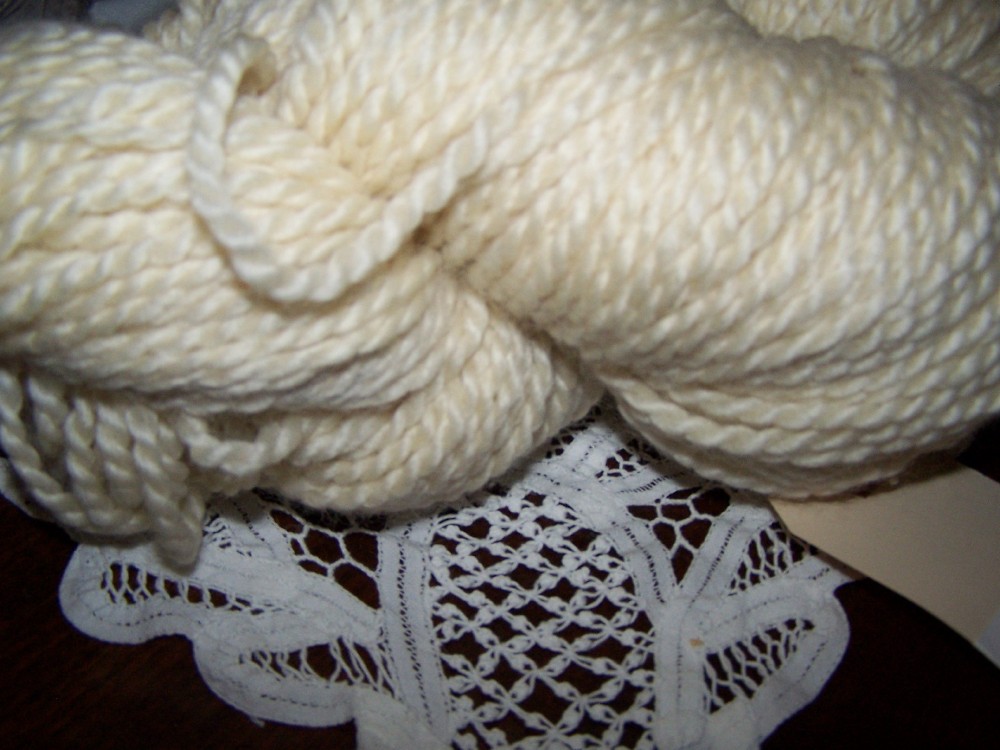
Meduseld bulky yarn

Meduseld worsted weight yarn
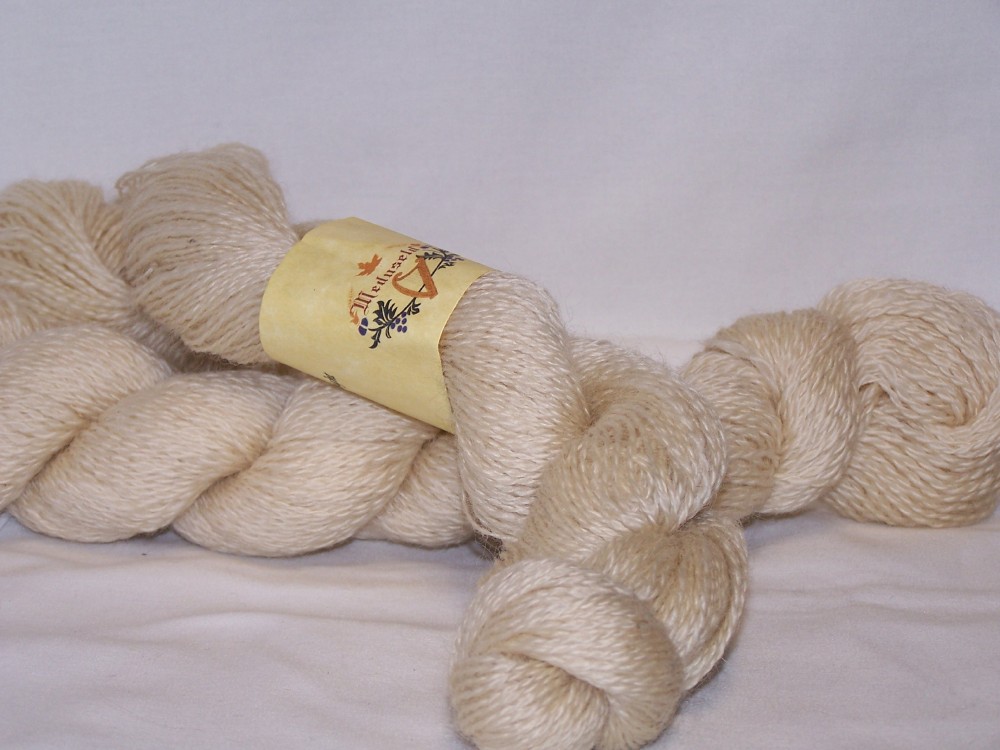
Meduseld Romney Fingerling/Lace weight yarn
They also make a lot of yarn. For several years we had an almost two-hundred pound Romney who created 14 pounds of wool each year. Once it was processed, his fleece still yielded 8 pounds of yarn, an amazing achievement for one animal. I wish I had cloned him:)
Romney yarn, due to its smooth cuticle (what gives it its luster) and loose crimp (the curls) tends to drape very well. It is excellent for loose flowing garments, such as shawls and draping sweaters. The yarn also makes beautiful, warm hats and scarves. It would not be good for garment that needs lots of structure as it responds to gravity and drops or pulls from the top. There are Romney yarns made from a tighter crimp fleece that won’t do this.
Another factor to consider is the scale that measures from course to fine. Yarns can be lab tested for microns, or the width of each strand. Where a specific yarn falls on this scale indicates how comfortable that particular yarn will be next to your skin. Our Dorset Downs (not to be confused with the meat sheep Dorsets) with their ultra fine fibres, provide a baby-soft yarn. A Romney’s yarn is more course, making it good for sweaters and outer garments. Which is good – who would want to cover up that sheen :>)


